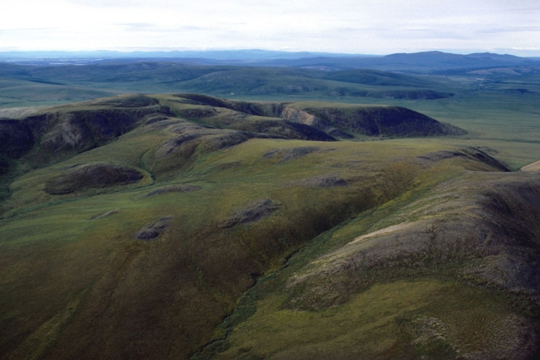Vuntut, << VOON toot, >> National Park is a protected wilderness area in northern Yukon, Canada. Ivvavik National Park lies directly to the north, and Alaska, in the United States, is directly to the west. Vuntut has a land area of 1,073,700 acres (434,500 hectares). An agreement between the governments of Canada and Yukon and the native Gwich’in people established the park in 1995.

Natural features of Vuntut National Park include the British Mountains and a level wetland area known as Old Crow Flats. The flats have about 2,000 shallow lakes and ponds, with streams and rivers flowing through them. The name Vuntut means among the lakes in the Gwich’in language. The Old Crow River borders the park on its south side, and Black Fox Creek forms Vuntut’s eastern border.
Sedges, shrubs, spruce trees, and wildflowers grow in upland areas of the park. The Old Crow Flats support a variety of aquatic (water) plants. Animals that live in Vuntut National Park include black and grizzly bears, lynxes, musk oxen, muskrats, wolves, and wolverines. Part of the Porcupine caribou herd, a large herd of Grant’s caribou named for the Porcupine River, spends some of the year in Vuntut. Thousands of migratory birds stop at the Old Crow Flats. Northern Yukon experiences cold winters and cool summers. It can snow at any time of the year.
The closest community to Vuntut National Park is Old Crow, the most northerly community in Yukon. Visitors can fly from Old Crow to the park, a distance of about 30 miles (50 kilometers). Because there are no facilities or services inside the park, visitors must be entirely self-reliant. The park offers recreational opportunities for experienced campers, canoeists, hikers, and skiers.
